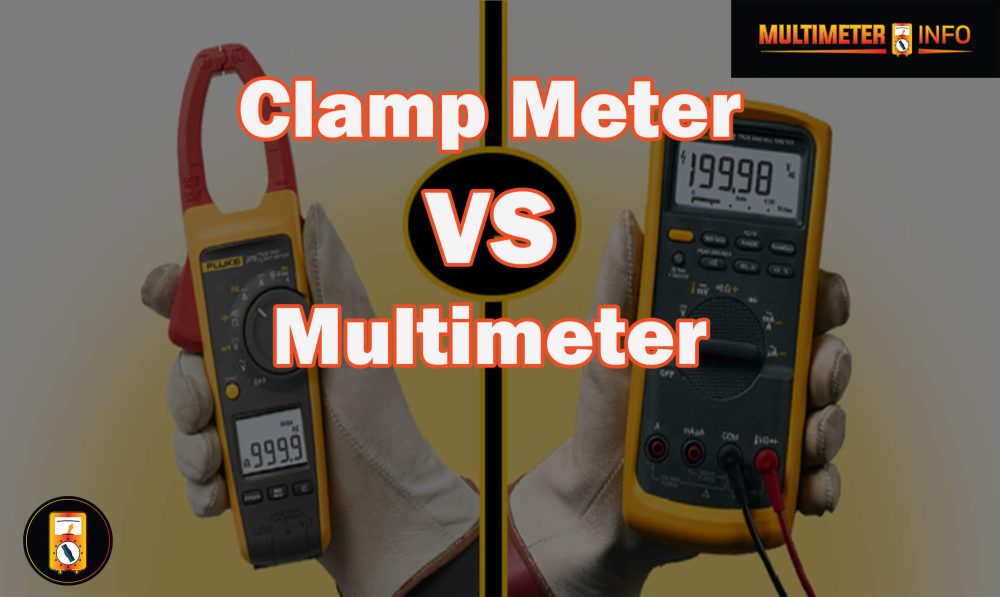Are you an electrician who needs to measure voltage or current without disconnecting a circuit? Would you like to save time and money using the right tool for the job? If so, then it’s time to consider investing in a clamp meter. Clamp meters are becoming increasingly popular among DIYers and professionals alike because of their ability to measure AC and DC currents quickly and accurately. In this blog post, we’ll walk you through using a clamp meter effectively to get precise measurements when dealing with electrical circuits.

What is a clamp meter?
A clamp meter is a device used to measure the current flowing through an electrical system without having to break the circuit. It is beneficial for measuring alternating current (AC) since it allows measurements from energized sources that don’t require direct contact with wires. Clamp meters also feature a built-in display for easy readings and can detect and alert users to potentially dangerous elements such as ground faults.
What are the uses of a clamp meter?
Clamp meters are commonly used in electrical installations and maintenance, where it is important to measure current without breaking the circuit or shutting off the power. It can also measure voltage and resistance, detect phase sequence and polarity, and identify broken circuits. Professional electricians can effectively use clamp meters when troubleshooting systems as they provide accurate readings with minimal disruption and cost savings. Additionally, they are suitable for use in hazardous environments due to their non-contact operation. Furthermore, clamp meters can be used to test transformer turns ratio, check inductance on motors, evaluate capacitor condition, and measure surge current. In summary, clamp meters offer many advantages for professional and DIY electricians.
Overall, clamp meters are invaluable for anyone working with electricity and provide accurate measurements in various situations. Their non-contact operation makes them particularly suitable for use in hazardous environments. At the same time, their ability to detect potentially dangerous elements provides users with added safety. Clamp meters can measure current, voltage, resistance, and other parameters, making them essential for electrical maintenance and installation.
How to use a clamp meter to measure voltage?
Using a clamp meter to measure AC voltage is simple, but critical safety steps must be taken to ensure accuracy and safety.
- Select the proper clamp range for the voltage you measure by setting the AC/DC selector switch and turning on the device.
- Ensure all safety requirements are met before making any measurements, including turning off power if possible or using approved insulated tools as needed.
- Place the jaw of the clamp meter around one conductor of the circuit to measure voltage from across it.
- Note down your reading in volts (V).
- Repeat steps 3 & 4 for each conductor until you have measured every connection within your circuit, noting each reading as you go along.
- Finally, turn off both switches and disconnect any leads attached before removing your clamp meter from the circuit to be measured.
Following these simple steps, you should have no trouble using a clamp meter to measure AC voltage. However, it is always wise to seek help from a qualified electrician for any electrical work involving potentially hazardous voltages and currents if in doubt.
Safety should always be your priority when dealing with electricity – never take unnecessary risks!
By following the steps outlined above and safely measuring each conductor in your circuit separately, you can get an accurate reading of the AC voltage present. This information can help identify problems or provide data for other electrical tests. Once all the readings are taken and recorded, you can rest assured knowing that your meter gives reliable results – helping ensure a safe and efficient environment.
Safety Disclaimer:
This article is only intended as a guide and does not replace professional help or advice from a qualified electrician. Please take all safety precautions when dealing with electricity, including turning off power if possible or using approved insulated tools as needed. Always err on the side of caution and never take unnecessary risks. It is recommended that any electrical work involving potentially hazardous voltages and currents be supervised by someone knowledgeable in those areas – thank you for understanding!
Tips for getting the most accurate readings from your clamp meter:
- Check that the clamp is securely closed around the conductor and that the jaws and the conductor have a good electrical connection.
- Avoid measuring current in cables with more than one conductor, such as twisted pairs or multiple conductors bundled together.
- Ensure to use insulated conductors when measuring current to avoid accidental contact with live wires and potential electric shock hazards.
- To get accurate readings, it’s important to select an AC range that matches the expected current you’ll be measuring; if needed, use a lower range to reduce overloads on your meter.
- For Higher current measurements, check accuracy by taking several readings for consistency; if readings vary significantly, the clamp meter is likely not calibrated correctly or used incorrectly.
- Be sure to turn off the power source before taking measurements to ensure safe and accurate current readings.
- Never exceed the maximum rated current load for your clamp meter, as this can damage your equipment and accuracy.
- Finally, always inspect your clamp meter before each use to ensure it is properly calibrated and in good working condition.
These simple tips will help you get accurate readings from your clamp meter every time!
Benefits of using a clamp meter to measure voltage:
- Using a clamp meter to measure voltage has many advantages. First, it provides an easy way to take accurate readings without disconnecting wires or breaking into the electrical system. This makes it much safer than other methods of voltage measurement as there is no risk of electric shock and less chance for damage to be done when taking measurements.
- Using a clamp meter is also much faster than other methods. Instead of disconnecting and reconnecting wires with a clamp meter, all that’s needed is to open the clamp’s jaws and place them around the wire. This makes it easier to take readings in tight spaces or quickly find an issue in an electrical system.
- Using a clamp meter helps reduce maintenance costs as you can easily troubleshoot an issue without going through each component in the system. The device allows for quick diagnosis so that repairs can be done quickly and efficiently.
- Since this type of device fits onto most standard-size cables, it can be used on any cable regardless of size or shape. This makes it ideal for jobs where cables are in awkward places or have been customized.
- Finally, a clamp meter lets you easily measure currents without breaking into the electrical circuit. This means it can diagnose and troubleshoot circuits without interfering with the rest of the system. This method is much more accurate than other methods since it measures the true load on each wire rather than just the voltage.
Overall, using a clamp meter is an efficient, convenient, and safe way to measure voltage in any system. Not only does it allow for quick readings, but it also helps reduce maintenance costs by quickly diagnosing issues and ensuring accuracy when taking measurements. This makes it an invaluable tool for electricians and other professionals dealing with electrical systems.
Frequently Asked Questions:
Before taking any measurements with a clamp meter, always ensure all power sources are off and the circuit is isolated correctly. It’s also essential to ensure all connections are tight before taking measurements. Use insulated tools when handling probes and leads – never work directly on live circuits or components. Finally, be aware that some cheap models of meters may not have reliable accuracy readings, so it’s best to invest in a quality instrument beforehand.
To measure DC voltage, set your clamp meter to its “VDC” setting and connect one lead of the test leads to ground/negative, and connect the other lead to the positive or live circuit. Then open the clamp jaw and place it around both leads before closing it. The voltage reading should be displayed in the LCD window.
If you suspect your clamp meter is not giving accurate readings, check that all connections are secure and tight before attempting any further measurements. Additionally, inspect the probe tips for any corrosion or wear and make sure they are adequately insulated. If this does not resolve the issue, investing in a new, quality instrument is best.
Remember that electricity can be dangerous, so taking the necessary precautions is essential. Before taking any measurements with a clamp meter, always ensure all power sources are off, and the circuit is isolated correctly. Use insulated tools when handling probes and leads – never work directly on live circuits or components. It’s also essential to wear protective gear such as safety glasses and gloves when working with electricity. Finally, follow all manufacturer instructions carefully and never operate the meter when wet.
Yes, there is a difference between AC and DC voltage readings. AC voltage is measured in volts (V) and has an alternating current (AC) that constantly changes in magnitude and direction. On the other hand, DC voltage is measured in volts (V) but with a constant current flow that remains at the same level throughout. When taking measurements with a clamp meter, always measure the correct voltage type!
If you suspect your clamp meter is not giving accurate readings, check that all connections are secure and tight before attempting any further measurements. Additionally, inspect the probe tips for any corrosion or wear and make sure they are properly insulated. If this does not resolve the issue, investing in a new, quality instrument is best. Lastly, be aware that some cheap models of meters may not have reliable accuracy readings, so it’s best to invest in a quality instrument beforehand.
Conclusion:
In conclusion, using a clamp meter to measure Voltage is an effective and efficient way to measure the Voltage in a circuit accurately. With the proper knowledge and safety precautions, you can easily and safely use a clamp meter to measure voltage. With practice, using your clamp meter will become second nature and you’ll be able to get accurate readings every time. Remember: always follow the proper safety precautions when using a clamp meter! If you have any questions or doubts about using it correctly, contact an experienced electrician for help.





